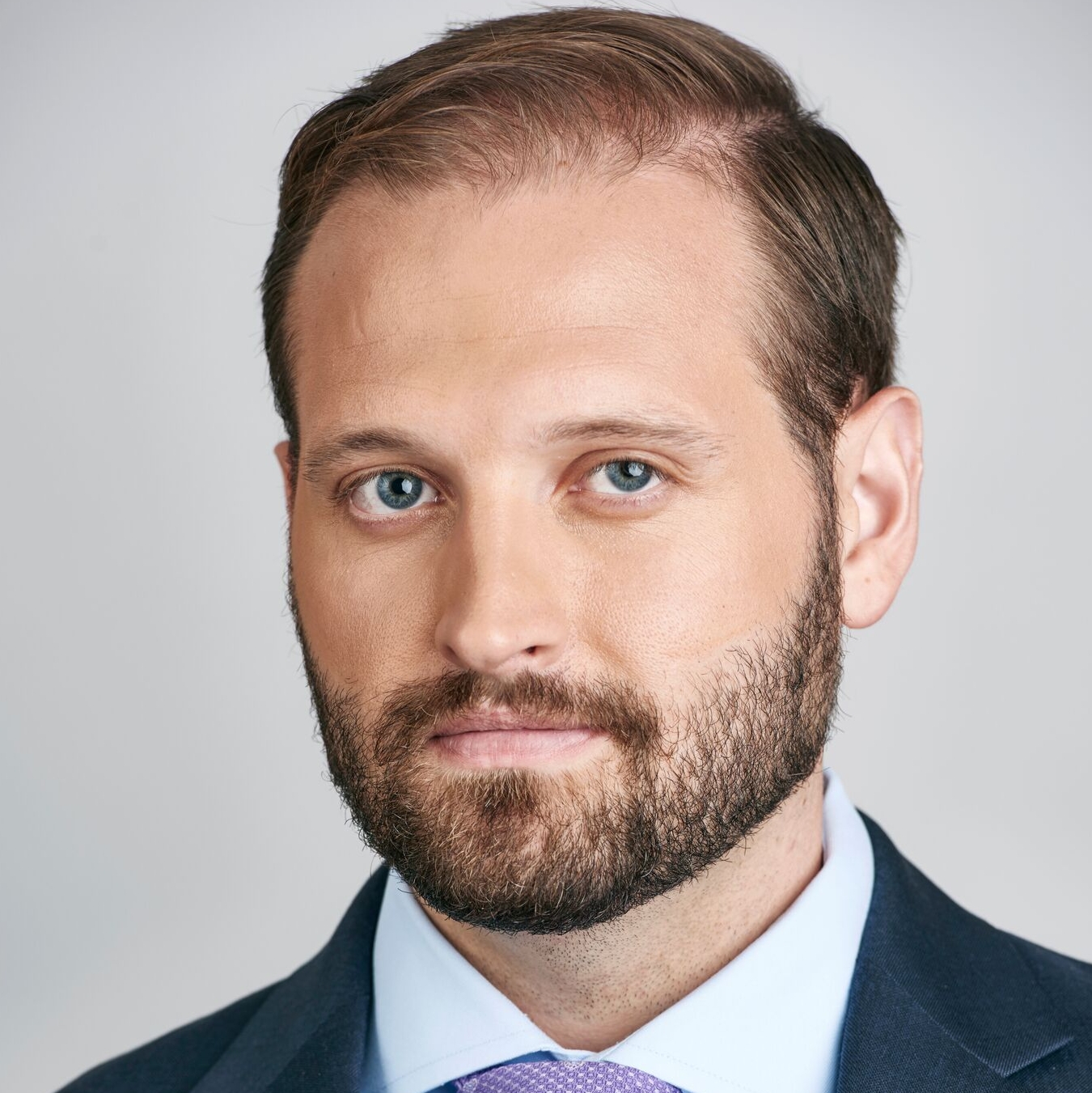New IDS merger aims to improve value and access for its communities
Two health systems in the Pacific Northwest decided the time is ripe for the kind of merger that can begin to meaningfully transform our nation’s healthcare system.




The focus of healthcare M&A transactions has been shifting today, with a growing emphasis on creating transformative partnerships aimed at improving value and overall cost effectiveness. As health system M&A transactions declined from a high of 117 in 2017 to 49 in 2021, the average deal size increased with a growing number of megamergers, where the smaller partners’ revenues exceeded $1 billion. The reduced number of transactions reflects a dwindling number of independent community hospitals available for potential mergers. As a result, provider systems are beginning to seek merger partners that can help them transform healthcare by developing new models of care delivery, supporting the growth of population health capabilities, expanding at-risk/value-based arrangements and strengthening consumer access to specialty product lines. Improved access to capital is a frequent priority.
This type of transaction promises to drive industry transformation amid heightened antitrust scrutiny of prospective M&A deals by the FTC and state attorneys general.a
A prominent example is the January 2021 merger in the Pacific Northwest of Tacoma-based CHI Franciscan Health and Seattle-based Virginia Mason Medical Center (VMMC) to form a new regional integrated delivery system (IDS): Virginia Mason Franciscan Health (VMFH).
Health systems whose market situations and objectives are similar to those of VMFH can benefit from lessons learned by the formation of this new IDS.
Combining unique competencies to better serve the healthcare market
VMFH now operates as a subsidiary of CommonSpirit Health, the nation’s largest Catholic health system by revenue, with a focus on becoming a model for consumer-driven, value-based healthcare.
The new IDS will serve the rapidly growing Greater Puget Sound region in a single new operating company with system level care delivery and a unified approach to value-based care models of the future. The IDS acknowledged both VMMC’s secular status and CHI Franciscan’s Catholic identity, with a single senior management team and board of directors under a common operating company.
Both of the merging organizations gained important benefits from the merger. VMMC received a much-needed infusion of capital and financial stability, which has strengthened regional community access to key clinical services. Franciscan Health gained access to market-leading intellectual capital and VMMC’s unique healthcare operating model, the Virginia Mason Production System, which will help realize its goals of delivering outstanding consumer-focused healthcare and becoming an industry leader in transforming healthcare delivery.
The consolidated health system also is expected to surpass many industry leaders in the quality of service it can deliver in its market, including offering greater consumer choice and improved access.
VMFH now operates 11 hospitals and nearly 300 sites of care across Western Washington, including primary and specialty clinics, same-day surgery centers and Virginia Mason’s Benaroya Research Institute for autoimmune diseases, including diabetes, lupus, cancer and multiple sclerosis. VMFH also operates the Bailey-Boushay House, a nationally recognized skilled nursing facility with a particular focus of HIV/AIDS patients. The IDS also is carrying forth the previous partnerships of CHI Franciscan and Virginia Mason in obstetrics/women’s health services and radiation oncology.
Objectives of the merger — and steps to achieve them
In addition to its focus on developing patient-centered care models, the IDS has articulated six specific merger goals.
1 Restructure care delivery to ensure im- proved access and value and to excel in managing population health. VMFH focused its efforts on extending digital capabilities and virtual services across its enterprise, including bed placement, clinical staff coverage coordination and clinical expediting via a systemwide command center. A key area of focus was on pre- paring virtual services, including those involving intensive care units, hospitalists and after-hours ambulatory practice call centers, for systemwide deployment. Premerger clinically integrated networks have been merged with parallel panels, and all have become top performers in the Medicare Star ratings and risk adjustment factors scores, providing valuable performance-based income to the new system.
2 Build the infrastructure needed to optimize access to information for critical thinking and decision-makig. Implementation of the Virginia Mason Production System (VMPS), which applies a lean management methodology, has allowed clinicians and residents to participate in systemwide quality-improvement efforts. The system has enabled VMFH to achieve the region’s highest Leapfrog ratings over the past 17 years.b
3 Build primary care access and specialist alignment to shape integrated care models beyond the acute care setting. To achieve this goal, VMFH has installed a new primary care improvement process that enables the health system to accommodate 16,000 additional patient visits annually. The process, which has included the addition of eight new primary care physicians, has yielded an estimated $7 million in new net revenue.
4 Create appropriate regional scale to realize a truly integrated regional delivery system. Recently, VMFH signed an agreement with Dallas-based Intuitive Health to open multiple hybrid emergency department and urgent care centers in the Greater Puget Sound region over the next four years. It also is implementing a hospital-at-home program in the region through the existing CommonSpirit joint venture with Contessa. These strategic partnerships support integration and the delivery of consumer-centric models.
5 Develop a value proposition around how to meet the community’s desire for high-quality services closer to home, including high-impact specialty service lines. Coordination and rationalization of care through the advancement of systemwide service lines has allowed for care to be better coordinated and rationalized, and it has provided opportunities to build on existing clinical centers of excellence and expand offerings, such as VMMC’s new cardiac extracorporeal membrane oxygenation program, which has become the busiest in the Pacific Northwest because it can provide patients with access to thefull continuum of care without leaving the system.
6 Pursue corporate synergies, network and value-based purchasing opportunities to generate resources to invest in capital improvements. To achieve this goal, VMFH focused on achieving supply cost savings, reducing denials on insurance claims and reducing the amount VMFH pays on debt.
To realize these goals, VMFH initiated aseries of transformation work teams under the direction of Ketul Patel, CEO of the newly combined VMFH system. The teams’ goal is to continuously improve patient care and satisfaction. To ensure patients are served close to home, efforts to expand clinical capacity have focused initially on cardiac and vascular, digestive health, neurosciences and spine, and primary care improvement.
Rolling out the VMPS system
VMMC had earned a reputation for quality and safety thanks it to its management method using the VMPS. The system aims to achieve zero defects in healthcare by empowering care delivery staff to improve care processes. Based on the tenets of the Toyota Production System, the VMPS has earned VMFH a national reputation for quality.
Patel recently explained, “We have created this new health system knowing full well we want to scale the production system, and the quality, safety and patient experience outcomes that CHI Franciscan is building and that Virginia Mason is legendary for.”
Achieving this transformation requires all leaders to undergo work training in core principles and practices of the system.
A crucial first step of the post-merger integration has been to create strategic priorities and a “regional vision” for the new system, building on the numerous integration and innovation workplans that were necessarily created before the merger to develop meaningful alignment among VMFH, its operational and clinical leaders, and its parent CommonSpirit Health.c
Positive merger outcomes reported to date
Early results following the official launch of VMFH in January 2021 are positive; the new organization is meeting goals for better serving patients across the broader Seattle/Tacoma markets and operational synergies from combining operations to support service. throughout 2021, executives worked to integrate and develop coordinated clinical care in a system that focuses on quality, safety and the patient experience. The revised system of care shows preliminary dividends. VMFH’s goal is to becomea destination health system serving the Pacific Northwest.d The plan for achieving this goal requires enhancing clinical service competencies and VMFH’s consumer-value proposition through foundational investments in systems, facilities and initiatives that deepen targeted clinical, research and academic capabilities.
VMFH’s distinguishing feature is its clear vision and mission for improving care in the community, meeting changing consumer demands and coordinating and managing care for defined populations. Accordingly, coreguiding principles baked into the newly formed organization ensure appropriate focus on these overarching goals.
As with any newly merged organization, it takes time to integrate the culture, achieve strategic and operational measures and establish a refined market identity. VMFH owes its current success to the careful planning that firmly established its vision, goals and market imperative and helped the legacy organizations remain focused on accomplishing the merger.
Success depends on a rigorous planning process
Over an 18-month period, executive leaders of the two organizations explored the strategic rationale for the partnership and considered affiliation alternatives as they focused on the value the new regional entity could deliver. (See the sidebar “Organizational and affiliation planning considerations,” below.) They employed a rigorous seven-step process to define the path forward, addressing core issues and potential stumbling blocks ranging from key cultural and identity issues to capital, integration and operational commitments required under the agreement. Other organizations contemplating a potential merger can benefit from adopting these steps to guide such an effort.
1 Craft a vision. For three years prior to the merger, the two organizations pursued joint activities under a contractual strategic affiliation agreement (e.g., joint ventures on obstetrics, radiation oncology and an ambulatory center). Success in these endeavors prompted further examination of their long-term partnership and provided a basis for crafting a vision for a new, joint organization developed by the governing boards and executive leaders.
2 Develop a value proposition and fact-based business case. To support the vision, the parties formed a working group to perform high-level feasibility studies focused on evaluating strategic initiatives and potential partnership structures. These studies provided the foundation of the partnership strategy, value proposition and business case.
3 Vet clinical service opportunities and plans. The parties created detailed service-line growth plans from the bottom-up. Involved in this effort were key service-line medical and administrative leaders from the two organizations’ internal medical groups along with independent physician leaders. Vetted plans resulted in enhanced services and tapped into the potential for clinical synergies in inpatient, ambulatory and virtual settings.
4 Evaluate organizational models and options. Several different organizational models were developed and evaluated for their ability to meet organizational goals of both parties and their fit with the strategic vision (e.g., expanded contractual strategic affiliation, joint venture, joint operating company and merger). Ultimately, the parties elected to merge.
5 Create rigorous financial and operational plans. The two organizations developed financial and operational plans that included planned budgets and performance targets at the market level. These plans considered time to execution, market-based service requirements and capital investment commitments. The plans ultimately were vetted and refined by the parent health system, CommonSpirit.
6 Agree on a capital investment schedule. Site- and project-specific capital investment schedules were formed and prioritized according to the capital needs of each organization, with expected capital investments clearly delineated for all constituencies.
7 Delineate post-merger integration steps. A master integration plan was developed, with accretive steps to move the merger forward and timelines and commitments to be fulfilled, adopted and updated continuously throughout the process.
Footnotes
a. The federal appeals court barred Hackensack Meridian Health, New Jersey’s largest health system, from acquiring Englewood Hospital, for example.
b. Virginia Mason Franciscan Health, “Virginia Mason Franciscan Health receives national recognition for patient safety,” News release, May 10, 2022.
c. For details, see Virginia Mason Institute, “Expanding the Virginia Mason Production System to new corners of Virginia Mason Franciscan Health,” Case Study: Change Management, Lean Management, Strategic Direction,” March 24, 2022.
d. A destination health system features clinical, research, teaching and education competencies within select clinical programs in order to serve patients from a broader geographic region.
Merger opportunity supported primarily by volume
The following considerations informed this analysis:
- As of 2020, 4 million people reside in the Seattle/Tacoma metro area.
- The Seattle/Tacoma area is among the fastest growing healthcare markets in the nation, with population growth in Seattle, surrounding King County and nearby Pierce County (including Tacoma) amounting to 21%, 16% and 6.5%, respectively, since the 2010 census.
- Comprehensive coverage and access to world-class specialty care are expected among major employers and a population that skews younger, more educated and having a higher average income than the national average.
- Fortune 100 employers include Amazon, Boeing, Costco, Microsoft and Starbucks.
- About 60% of the population is commercially insured.
The market analysis concluded that about 46,000 outbound referrals in 2019 migrated into Seattle (King County) from Pierce and Kitsap Counties and that 4,000 admissions from King County residents went to competing providers in Pierce County.
Managed care enrollment in the Puget Sound area is projected to grow steadily over the next six years, with Medicare Advantage enrollment increasing fastest at a projected 7% rate year-over-year. This growth will afford the system the option to pursue network- and value-based contracting opportunities. VMFH expects to gain a competitive advantage in attracting consumers as a result of its commitment to value-based care, system-level contracting and a medical group culture and approach to care, along with its single-system service lines and physician-led clinical institutes.
Organizational and affiliation planning considerations
As part of the planning process for the creation of Virginia Mason Franciscan Health (VMFH), the two merging health systems considered several different organizational models, with input from external healthcare industry experts. The expert panel evaluated the potential evolution of the healthcare market and how VMFH could position itself to best serve the needs of the future healthcare consumer.
During affiliation planning, an integration work group considered four options that ranged from updating the existing strategic affiliation agreement to pursing a full-fledged merger with common health system governance and management.
The first option — i.e., making only minor revisions to the existing strategic affiliation agreement — was deemed unacceptable because CHI Franciscan Health and its parent, CommonSpirit Health, would be unable to secure a greater presence in downtown Seattle, and Virginia Mason would not be sufficiently guaranteed access to the capital it needed to grow and replace aging facilities on its First Hill campus in Seattle.
The parties selected the fourth option, which was to establish a Pacific Northwest parent organization accommodating both Catholic and non-Catholic entities initially, with one fiduciary board and separate community boards. Virginia Mason assigned its assets to CommonSpirit upon closing, less a $3 million legal defense fund to enforce a minimum capital commitment in the definitive agreement. As of Jan. 1, 2025, CommonSpirit becomes the sole member of VMFH.
Hallmarks of a consumer-focused IDS
Key competencies of Seattle-based Virginia Mason Medical Center (VMMC) and Tacoma-based CHI Franciscan Health were combined in making Virginia Mason Franciscan Health (VMFH) a consumer-centric integrated delivery system (IDS). VMMC had long enjoyed a distinct market reputation for exemplary quality and medical group practice processes that produced excellent outcomes, and CHI Franciscan had long served the Tacoma market and surrounding region with comprehensive care, market scale and access to resources from its parent national health system, CommonSpirit Health, to support local initiatives. The organizations recognized that combining these competencies would result in a best-in-class and innovative system for consumer-focused care. Here are key benefits that the two parties gained through the merger.
Unique care coordination and clinical capabilities. The enhanced population health capabilities obtained through the combined expertise of the legacy organizations will be critically important for effectively coordinating and managing care to broad populations.
Geographic coverage. VMFH’s presence across the Seattle/Tacoma region allows the IDS to develop deep expertise and depth in numerous elements for future healthcare organizational success (e.g., geographic access, diversity of patient population, alternative care modalities).
Resources to meet community needs. VMFH will be able to tap into the resources of CommonSpirit Health and CHI Franciscan to update facilities, equipment and other care delivery tools. They will then be able to build on VMMC’s strengths as an independent medical group and hospital serving a highly competitive market and thereby help obviate the challenges VMMC had faced in making key investments in technology, information management, facilities, and market expansion necessary for long-term success. This consideration was important in the business and capital plans of the merger.
Improved service across the region. CommonSpirit and CHI Franciscan saw a strategic need to better serve the Greater Seattle/Tacoma region through improved care coordination, stronger referral relationships and the ability to have more lives managed under value-based structures. The new IDS provides for expansion of services to the Washington state region and the Pacific Northwest and an enhanced ability to deliver high-quality clinical care, conduct clinical research and expand medical education programs.
Creation of a destination health system. VMFH’s creation is seen as an initial step toward creating an even broader regional health system with a consumer focus, a legacy for quality and ability to serve a large, comprehensive market.
Complexities of Catholic-secular mergers
Catholic and secular mergers involve tremendous complexities, particularly given the need for approvals from presiding Archbishops, frequent opposition from reproductive rights advocates and the ACLU, and anti-trust investigations from the FTC and state attorneys general.
These external challenges add to the complexity of combining different corporate cultures. For example, in 2019, UCSF Health in San Francisco cancelled discussions to deepen its collaboration with Dignity Health, a Catholic system, after students, providers and other stakeholders raised strong concerns about prospective limits on women’s reproductive services, LGBTQ care and end-of-life services they feared the Dignity partnership might have required. UCSF had been strongly motivated to pursue the merger, having experienced difficult capacity issues over several prior years. (In 2018, the health system had to turn away more than 800 patient transfers because of an insufficient number of beds.) Under the affiliation agreement with Dignity Health, UCSF Health would remain independent while significantly expanding the services its faculty and providers would deliver at three Dignity Bay Area hospitals. However, UCSF Health providers would have been required to follow Dignity Health’s mission and rules when practicing within Dignity hospitals. UCSF decided to cease discussion with Dignity regarding a deeper affiliation but not to discontinue its historic collaboration with the Catholic health system.
While unusual, even long-term affiliations involving Catholic systems can disintegrate over issues of local control. In 2020 after nearly a decade of affiliation, Hoag Memorial Hospital Presbyterian in Orange County, California, filed a lawsuit to split from Providence, the 52-hospital Catholic health system headquartered in in Renton, Washington. Hoag cited several reasons for wanting to end its deal with Providence, saying the affiliation undermined local decision-making and constrained growth. The dissolution finalized on January 31, 2022.





